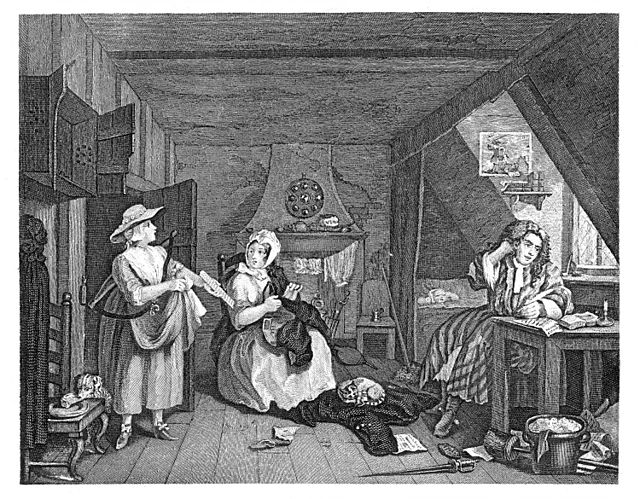Ned Ward, also known as Edward Ward, was a satirical writer and publican in the late 17th and early 18th century in London. His most famous work, The London Spy, appeared in 18 monthly instalments from November 1698. It was described by its author as a "complete survey" of the London scene and published in book form in 1703.
Ned Ward, 1731
Until the early 19th century, Grub Street was a street close to London's impoverished Moorfields district that ran from Fore Street east of St Giles-without-Cripplegate north to Chiswell Street. It was pierced along its length with narrow entrances to alleys and courts, many of which retained the names of early signboards. Its bohemian society was set amidst the impoverished neighbourhood's low-rent dosshouses, brothels and coffeehouses.
19th-century Grub Street (latterly Milton Street), as pictured in Chambers Book of Days
A late 18th-century illustration of a property on Sweedon's Passage, Grub Street
A copy of The Grub Street Journal lies at the writer's feet, in William Hogarth's The Distrest Poet. Set in a garret, the print has been described as a study of a typical Grub Street writer.
The Coffeehous Mob, frontispiece to Ned Ward's Vulgus Britannicus (1710). The fruits of the Grub Street publishers were read and debated in houses like this.





